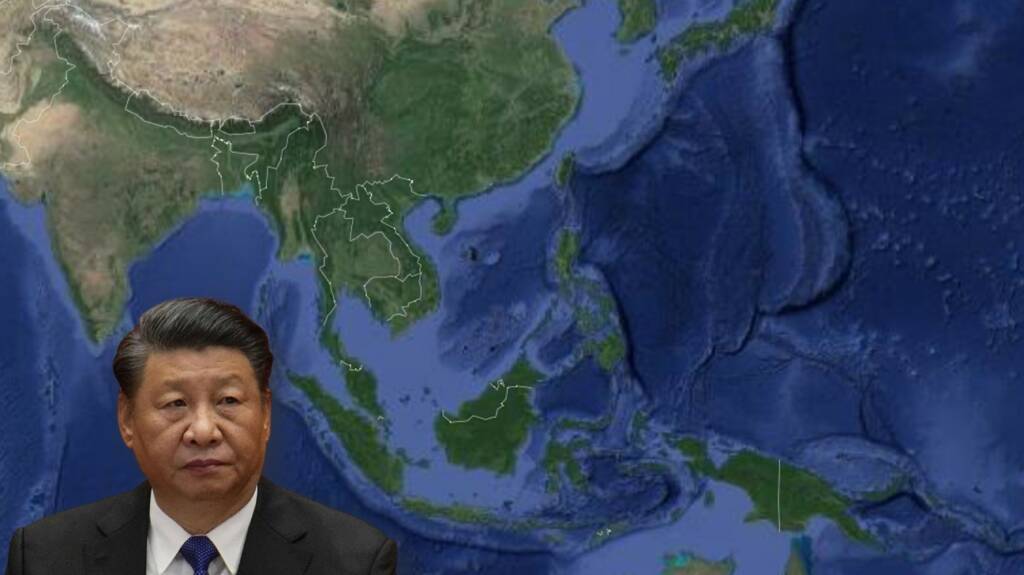At the time when the whole world was engulfed by the Covid-19 pandemic (that most likely finds its origin in the Chinese city of Wuhan back in early 2020), Xi Jinping was preparing for his neo-colonial agenda. Chinese Communist Party thought that it could capitalise on the disruption world over and replace the US to form a unipolar world order. However, things have taken an entirely different trajectory, and now, while China is facing the worst economic situation in the 21st century, Xi Jinping is currently in his most vulnerable time politically.
And now to rub salt into the wound, it is the resultant exodus of businesses and capital away from China that is propelling the neighbouring countries’ economy. The latest addition to the countries with positive economic growth of the Philippines. The Archipelago’s economy grew at the rate of 7.7% in the fourth quarter (Q4) and emboldened by this, bullish officials count on the omicron wave being ‘temporary’.
However, it is not just the Philippines but other China’s neighbouring countries too that have observed a rise in their fortunes. Throughout the Indo-Pacific, countries like South Korea, Taiwan, Singapore, Vietnam, India among many others have seen this exponential rise in their fortunes at the absolute expense of China.
Improving Indo-Pacific economic picture
- South Korea’s GDP growth: Due to record exports, South Korea’s economy grew at its quickest rate in 11 years in 2021, however, a slowdown in capital expenditure clouded the picture for growth this year. The Bank of Korea reported on Tuesday that the country’s gross domestic product (GDP) increased by 4.0 per cent in 2021, owing to a surge in export demand. In the October-December period, the economy grew a seasonally adjusted 1.1 per cent, topping the 0.9 per cent expansion predicted in a Reuters poll and up from a 0.3 per cent increase in the third quarter.
- Taiwan’s GDP growth: Taiwan’s economy grew at its quickest rate in more than a decade last year, fuelled by robust tech exports to support people working and studying from home amid the COVID-19 pandemic, as well as chip demand and resurgent consumer confidence. According to preliminary data released by the statistics agency on Thursday, initial gross domestic product (GDP) growth for 2021 is expected to be 6.28 per cent, up from 3.11 per cent the previous year.
- Singapore standing firm: In 2021, Singapore’s economy grew at its best annual rate in over a decade, as the country emerged from its worst recession on record, caused by the coronavirus pandemic’s severe impact on activity. Preliminary data released on Monday revealed that the city-GDP state’s increased 7.2 per cent in 2021, substantially in line with the government’s official prediction and rebounding from a record 5.4 per cent drop in 2020.
Not only these countries but in the case of Philippines GDP growth, it has also exceeded expectations. The Philippine economy grew by 5.6 per cent in 2021, following a 7.7% increase in the fourth quarter, as pandemic-related restrictions were eased, boosting corporate activity.
India’s GDP growth has also seen a boost with On Tuesday, the International Monetary Fund released its latest World Economic Outlook report, in which India’s economic growth prediction for the current fiscal year, FY22, has been reduced to 9%. And all the while these economies are growing, China has been taking the biggest hit.
China’s economic woes
In 2021, China’s crackdown on private enterprise reduced the market worth of some of the country’s major companies by over $1 trillion. While Beijing’s tightening control on the economy comes as authorities emphasised the need of prioritising “high-quality” growth that helps the people over GDP maximisation, the fact is that it’s all being done to appease Xi Jinping’s massive insecurities. However, as the year ended, in a surprising move, Chinese Premier Li Keqiang, in a bid to stabilise the economy, called for tax cuts.
Read more: 2022: China’s bloodiest year of the 21st century in making
This was being considered a major pivot from Xi Jinping’s “common prosperity” campaign that aimed at “curbing the disorderly expansion of capital”. However, anyone who follows the developments in China and keeps a keen eye on the leader of the nation would tell you how astonishingly fragile his ego is. Now, to satiate Xi Jinping’s ego and feed his ever-growing ego, the Communist Party of China is ready to make 2022 the bloodiest year, thereby making 2021 look like a milder trailer.
While the Chinese economy is bleeding with no possible reversal of trends in sight, the Indo-Pacific powers are encashing big bucks at CCP’s expense. This is in exact contrast to what Xi Jinping had in mind and this trend is most likely going to continue for foreseeable future.
